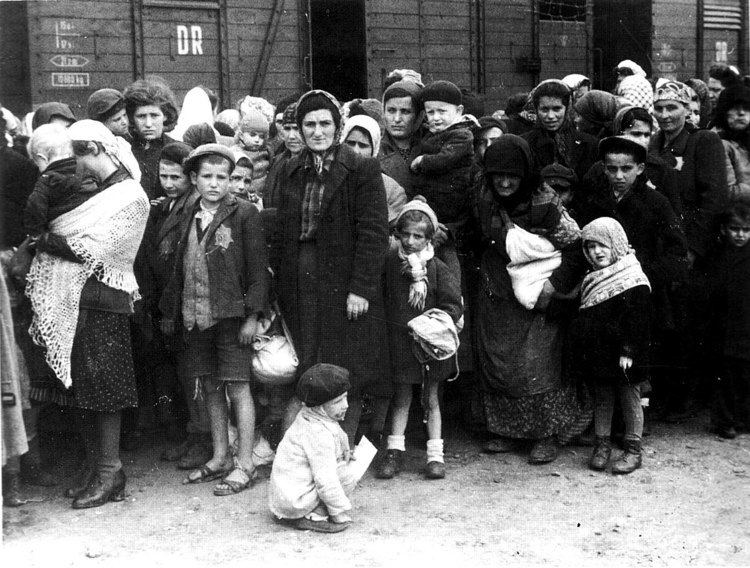 | ||
The Haavara Agreement (Hebrew: הסכם העברה heskem haavara "transfer agreement") was an agreement between Nazi Germany and Zionist German Jews signed on 25 August 1933. The agreement was finalized after three months of talks by the Zionist Federation of Germany, the Anglo-Palestine Bank (under the directive of the Jewish Agency) and the economic authorities of Nazi Germany. It was a major factor in making possible the immigration of approximately 60,000 German Jews to Palestine in 1933–1939.
Contents
The agreement was designed to enable Jews fleeing anti-Semitic persecution under the new Hitler regime to transfer some portion of their assets to their refuge in British Mandatory Palestine. It provided some relief for Jews fleeing by allowing them to recover some of the possessions and assets they were forced to surrender before departing. A portion of those possessions could be re-obtained by transferring them to Palestine as German export goods. The agreement was controversial at the time, and was criticised by many Jewish leaders both within the Zionist movement (such as the Revisionist Zionist leader Ze'ev Jabotinsky) and outside it. For German Jews, the agreement offered a way to leave an increasingly hostile environment in Nazi Germany; for the Yishuv, the new Jewish community in Palestine, it offered access to both immigrants and some economic support; and for the Nazis it was seen as a way of breaking the Anti-Nazi boycott of 1933, which had mass support among European Jews and was thought by the German state as a potential threat to a fragile German economy.
Background
Although the Nazis won the greatest share of the popular vote in the two Reichstag general elections of 1932, they did not have a majority, so Hitler led a short-lived coalition government formed by the NSDAP and the German National People's Party. Under pressure from politicians, industrialists, and the business community, President Paul von Hindenburg appointed Hitler as Chancellor of Germany on 30 January 1933. This event is known as the Machtergreifung (seizure of power). In the following months, the NSDAP used a process termed Gleichschaltung (co-ordination) to rapidly bring all aspects of life under control of the party. All civilian organisations, including agricultural groups, volunteer organisations, and sports clubs, had their leadership replaced with Nazi sympathisers or party members. By June 1933, virtually the only organisations not in the control of the NSDAP were the army and the churches.
Hanotea company
Hanotea (Hebrew: הנוטע) was a Zionist citrus planting company which served to assist German Jews' emigration to Palestine as part of the Zionist endeavor. In a deal worked out with the German government, Hanotea would receive money from prospective immigrants and use this money to buy German goods. These goods, along with the immigrants, would then be shipped to Palestine. In Palestine, import merchants would then buy the goods from the immigrants, liquidating their investment. This arrangement appeared to be operating successfully, and so paved the way for the later Haavara Agreement. Connected to Hanotea was a Polish Zionist Jew, Sam Cohen. He represented Zionist interests in direct negotiation with the Nazis beginning in March 1933. In May 1933 Hanotea applied for permission to transfer capital from Germany to Palestine.
The Transfer Agreement
The Haavara (Transfer) Agreement was agreed to by the German government in 1933, and continued in effect until the German government ceased to support it in 1938. Under the agreement, Jews fleeing persecution in Nazi Germany could use some of their assets to purchase German manufactured goods for export, thus salvaging some part of their personal wealth during emigration. The agreement provided a substantial export market for German factories in British-ruled Palestine. Between November, 1933, and December 31, 1937, 77,800,000 Reichmarks, or $22,500,000, (values in 1938 currency) worth of goods were exported to Jewish businesses in Palestine under the program. By the time the program ended with the start of World War II, the total had risen to 105,000,000 marks (about $35,000,000, 1939 values).
Emigrants with capital of £1,000, (about $5,000 in 1930s currency value) could move to Palestine in spite of severe British restrictions on Jewish immigration under an Immigrant investor program similar to the contemporary EB-5 visa. Under the Transfer Agreement, about 39 percent of an emigrant's funds were given to Jewish communal economic development projects, leaving individuals with about 43% of the value of whatever assets they were able to transfer out of Germany after administrative and shipping costs.
The Haavara Agreement was thought among some Nazi circles to be a possible way to rid the country of its supposed "Jewish problem." The head of the Middle Eastern division of the foreign ministry, the anti-Nazi Werner Otto von Hentig, supported the policy of concentrating Jews in Palestine. Hentig believed that if the Jewish population was concentrated in a single foreign entity, then foreign diplomatic policy and containment of the Jews would become easier. Hitler's own support of the Haavara Agreement was unclear and varied throughout the 1930s. Initially, Hitler criticized the agreement, but reversed his opinion and supported it in the period 1937-1939.
After the German invasion of Poland in September 1939, the program was ended.
